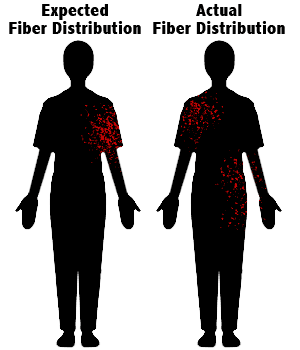FAQs
Click each question to show or hide the answers.
What are the limitations of the analysis?
The analysis of trace evidence can reveal connections between people and places that may not have been readily apparent at first. Results are provided to investigators to identify leads or assist in piecing together a more revealing picture of what may have happened at a crime scene.
The discipline’s primary limitation is that trace evidence can exclude an individual from an investigation but, unlike DNA testing for example, most trace evidence is unable to directly link or identify an individual or specific object. The results of examination are useful in narrowing down the possibilities for source and common origin via class characteristics and other properties.
How is quality control and quality assurance performed?
To ensure the most accurate analysis of evidence, the management of forensic laboratories puts in place policies and procedures that govern facilities and equipment, methods and procedures, and analyst qualifications and training. Depending on the state in which it operates, a crime laboratory may be required to achieve accreditation to verify that it meets quality standards. There are two internationally recognized accrediting programs focused on forensic laboratories: The American Society of Crime Laboratory Directors Laboratory Accreditation Board and ANSI-ASQ National Accreditation Board / FQS.
The Scientific Working Group for Material Analysis (SWGMAT) works to set quality guidelines across a variety of trace disciplines including glass, fiber, hair, paint and tape. These standards provide good laboratory practice for trace analysts.
What information does the report include and how are the results interpreted?
Because of the individualized nature of trace evidence fragments, there are often no significant statistics that would be used to determine the likelihood of accuracy, as would be found in DNA evidence. Without statistics, presentation of analysis and interpretation results can vary. In 2009, the SWGMAT presented an updated conclusion scale that combined work by individual scientists and international work groups (TES, 2009). Although not universally preferred by officers and members of the court, the effort to make probability statements clear and consistent is critical.
How does the conclusion scale work?
A trace evidence report should contain both the conclusion, conclusion scale definitions and the supplemental explanation of findings.
Trace Evidence Conclusion Scale
(introduced in 2009)
- Identified (Type I Association) - A positive identification; an association in which items share individual characteristics that show with reasonable scientific certainty that the items were once from the same source.
- Very Strong Support - An association in which items are consistent in all measured physical properties or chemical properties and share highly unusual characteristic(s) that are unexpected in the population of this evidence type.
- Strong Support (Type II Association) - An association in which items are consistent in all measured physical properties or chemical properties and share unusual characteristic(s) that are unexpected in the population of this evidence type.
- Moderately Strong Support (Type III Association) - An association in which items are consistent in all measured physical properties or chemical properties and could have originated from the same source. Because similar items have been manufactured or could exist in nature and could be indistinguishable from the submitted evidence, an individual source cannot be determined.
- Moderate Support (Type IV Association) - An association in which items are consistent in all measured physical properties and chemical properties so could have originated from the same source. This sample type is commonly encountered in our environment and may have limited associative value.
- Limited Support (Type V Association)- An association in which some minor variation exists between the known and questioned items that could be due to factors such as sample heterogeneity, contamination of the sample(s), or the quality of the sample. The items may be associated, but other sources exist with the same level of association.
- Inconclusive - No conclusion can be reached regarding the association between the items.
- Elimination - The items are dissimilar in physical properties or chemical composition and did not originate from the same source.
In addition, findings may be supported by verbal explanations and images depicting the likely and actual distribution of trace evidence. For example, if a crime victim claims that her assailant grabbed her left arm and stole her purse, fiber transfer from the attacker’s clothing would be expected on her left side and sleeve. An image of the expected and actual fiber distribution patterns can be very helpful in a courtroom setting.

(Courtesy of NFSTC)
Are there any misconceptions or anything else about trace evidence that might be important to the non-scientist?
A common misconception of trace evidence is that a tiny piece of evidence can always be “matched” and directly identify an individual object. This is a rare outcome as the items examined in trace most often lead to identification of the evidence as part of a class. For example automotive paint may be found to be of the same type as the car in question, but not automotive paint from the car in question.
Another misconception is that every crime laboratory handles trace evidence. As a matter of fact, in the 2005 Census of Publicly Funded Forensic Crime Laboratories, only 55% of laboratories handled trace evidence. The report does not break out the specialties within trace, however, and some specialties are most often performed at regional laboratories.